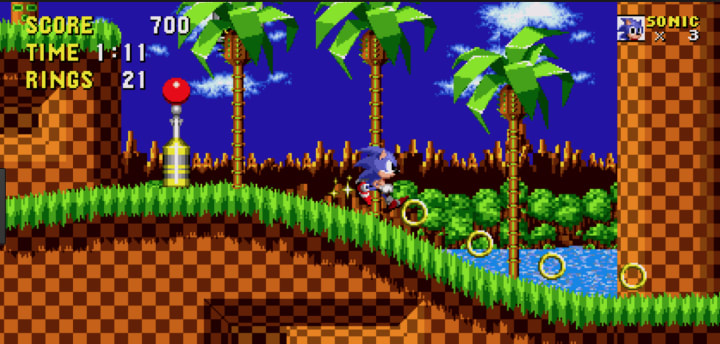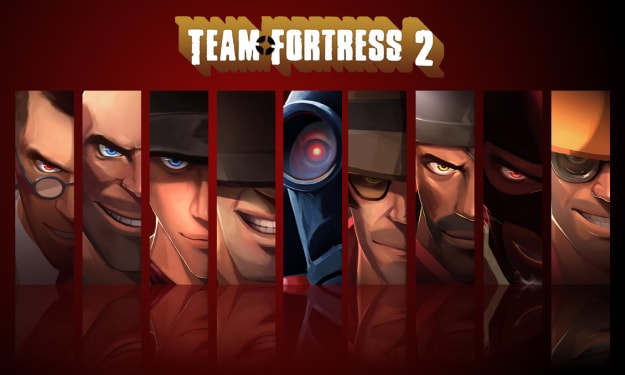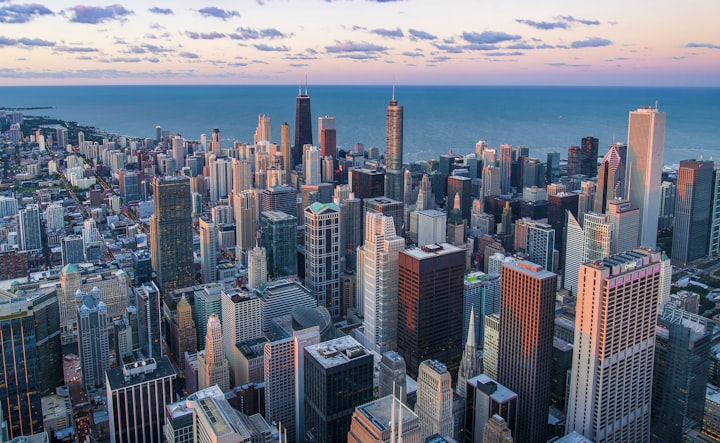
Well hello there, old friend. I’m guessing you have something to do with the angry fanbase.
Jokes aside, I find it disheartening that a character of Sonic’s calibre has endured such a relentless onslaught of terrible-to-mediocre games in recent years. Even after going back to games like Sonic Adventure 2, which was the recipient of any and all free time that my 11-to-12-year-old self managed to find, playing it again in my mature years has resulted in perceiving its several flaws, such as the less-than-impressive voice acting (not super important) or how badly rehashed the levels are from story to story (kind of important). There will always be saving graces such as the old 2D Sonic games and games like Sonic Heroes, but the blue blur’s significant decline simply isn’t something that can be ignored.
So, being the person that I am, I did the exact opposite of ignore it and instead decided to think way too much about it.
The Sonic franchise suffered from some almost hilariously badly-placed hinderances, the most interesting of these being his calling card: speed.

Zoom zoom!
When Sonic first came to the forefront, his games were all about going fast. Each level brought about expectations of blazing through Eggman’s baddies with as much velocity as the Sega Genesis could handle, and it was fun! I’ve always had fond memories of running and jumping through Mobius and its tricky landscape, so what went wrong?
It seems to me that Sonic’s entire gimmick (going fast) had a drastically poor jump into the 3D world. I noticed when playing and watching games like Sonic Forces or the regular hedgehog levels in Sonic Unleashed that many of the levels were littered with areas that expected you to just hold forward and blaze through. Doing this feels as though the game is just on autopilot for much of the level, and that to me is significantly unappealing. If you try and pass through these areas slowly, however, it becomes apparent very quickly that there was not much thought put into at least these parts of the level; taking these sections slowly have typically resulted in the game sending you forward at blistering pace anyway, clipping through areas that should not be clipped through, unresponsive controls, and AI with a default setting of “pylon.”

Holding forward is almost always the best strategy in the majority of Sonic's more recent games.
The problem is that, without speed, it doesn’t feel like a true Sonic game in the eyes of fans, and it’s unfortunate that such speed seemed to justify putting little effort into these level sections on the presumption that players would run through them as fast as they could; it fundamentally de-prioritized level design. What also hasn’t been working thus far is that the lightning-quick aspect of the games hasn’t had a good manual component paired with it, and so the player doesn’t really feel any autonomy when playing Sonic games.
Speaking of a need for speed (SEGAs insistence, not the racing games), can we talk about the horrible mistake that SEGA has made to help contribute to the crumbling Sonic foundation? Namely, their tendency to rush their games.
For those of you that aren’t aware, the universally-despised Sonic the Hedgehog 2006 suffered from a rushed release, which basically means that the team had to release an unfinished game in order to meet the deadline, and the drawbacks were absolutely atrocious. You could barely make it through some levels without clipping through a good portion of the stage, glitches rendered some boss fights almost unplayable, and there were even portions of this (offline) game that dropped frames. If they had just waited and made sure the game was finished before release, this could have been a greatly enjoyable entry; the multitude of characters you could use in the story coupled with the different moves they had would have made for an interesting, level-by-level experience.
To put it scientifically, it was a mess.
Word on the street is that Sonic Forces is having difficulty overcoming some of these problems too, and another rushed release certainly wouldn’t have helped. Alas, I still see the same game-plays-for-you mechanic, and if SEGA don’t make their titles more engaging soon, the plug may finally be pulled on this beloved universe.
So, let’s take a look back and talk about what has worked in recent years.
Bringing Sonic back to his roots is the obvious way to keep his games interesting. Sonic Mania did a phenomenal job of this; it was basically a 21st century Sega Genesis title with an artistic face-lift. It was made even better by the brand new, original levels and the option to play as Knuckles or Tails, which added some variety to your player character. I’d be interested in seeing several future games in this style (Knuckles’ Chaotix reboot, anyone?).

Cream the Rabbit (top), leader of Team Rose's Flight Formation, can carry Amy Rose (middle) and Big the Cat (bottom) when acting as the leader.
Another clever move came in the form of Sonic Heroes which, to me, is among the best 3D Sonic games there is (granted, there isn’t a whole lot of competition, but I digress). Sonic Heroes’s whole gimmick was teamwork; instead of taking control of a single character, you play as a group of characters who all move together, and you change the “leader” with the X and Y buttons (I played on the GameCube) to take on different challenges that the game threw at you. There was a Flight Formation, where characters like Tails or Rouge the Bat carried their team to great heights. There was also Power Formation, where heroes like Big the Cat or Vector the Crocodile destroyed large groups of enemies and broke through obstacles of equal or greater largeness. Finally, there was a Speed Formation, which allowed characters like Sonic and Shadow to blaze through levels in true Sonic-fashion.
The latter formation was what made this game interesting to consider. Even though the “speed” element was still very much present, it was not the main aspect, but rather a single component out of several that made up the foundation for the game’s play-style. This meant that the players could not have been expected to run though the levels as fast as possible, as each level had formation-specific challenges where speed had a 33% chance of being involved, preventing those less-than-impressive level sections that, rightly or wrongly, would have been borderline-ignored otherwise.
Remember those things I said about Sonic Adventure 2 earlier? Perhaps I was being a bit harsh; I can still enjoy playing it despite some of its lazier components. This is due largely in part, however, to the inclusion of the Chao Garden. The amount of time I spent in the Chao Garden probably outweighed the time I spent in Story Mode tenfold; there was just something so satisfying about upgrading your Chao, watching it take on others in Chao Race and Chao Karate, and just observing them going about their daily lives in the garden and at school.
I’ve had so many good memories with the Sonic franchise, and it hurts a part of me to see speed, both in the games themselves and in their production, hurt the iconic hedgehog in the ultimate form of irony. I know in my heart, however, that Sonic still has some good games left in him, it’s just a matter of SEGA taking things slow for once and utilizing their vast world to the best of their ability. Maybe we’ll see a revival one day, but for now we’ll just have to keep replaying Sonic Mania to keep our positive feelings about Sonic, the real Sonic, alive.






Comments
There are no comments for this story
Be the first to respond and start the conversation.